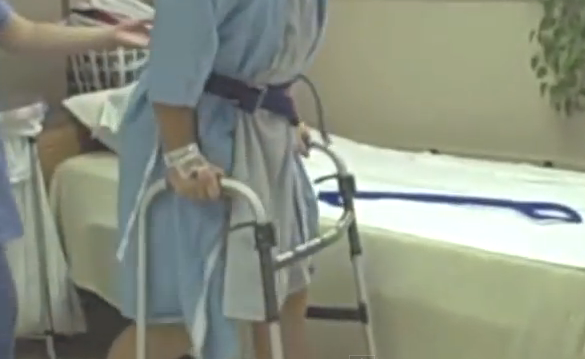Hip replacement surgery is an ideal treatment option for cases of broken hip joint of severe hip joint damage which severely limits the daily activities. Hip joint damage can occur due to bone injuries, osteoarthritis, bone tumors, aging, and rheumatoid arthritis, etc.
Hip replacement recovery time is dependent on a variety of factors as discussed below:
- Health of the patient: The weight, age, and overall mental and physical health of the patient are instrumental in determining the recovery time period. It is considerably longer in people with chronic conditions like diabetes.
- Type of surgery: Hemiarthroplasty or partial hip replacement surgery is marked by removal of the femoral neck ball and replacing it with a metallic prosthesis. A total hip replacement surgery is marked by removal of the damage hip joint bone and cartilage and replacing them with artificial implants. Methylmethacrylate, i.e., a special kind of acrylic cement is used to fix the parts that are newly inserted. Patients need to stay for 3 to 5 days in the hospital after the surgery. Depending on the type of surgery, full recovery can occur in about three to six months.
- Correct time: Undergoing hip replacement surgery at the correct time before the joint has severe or completely deteriorated can help lessen the recovery time. Patients should therefore always seek proper and prompt diagnosis and treatment for any instance of severe and persistent pain in the hip area.
- Cemented prosthesis: It comes with a faster hip replacement recovery time due to enhanced healing. It is recommended for patients with weak bones, the less active, and the elderly.
- Uncemented prosthesis: Often suggested for active and young patients, uncemented prosthesis has prolonged recovery period as the bone take a longer time to naturally grow and connect to the prosthesis. Patients may experience pain in thigh for a few months as the bone attaches to the prosthesis. Activities need to be restricted for 3 to 4 months.
- Response and co-operation of the patient: Co-operation with the physical therapist with regards to hip pain exercises, adhering to the physician’s instructions, and faster learning of pain management methods helps hasten rehabilitation and hip replacement recovery time.
The process of recovery from hip replacement surgery
- Post hip replacement surgery, patients are given pain medications for pain alleviation. On the same day, they may be asked to sit on the side of the bed or on a chair. A physiotherapist or surgeon may offer guidance for leg lifts, ankle pumps, and heel slides.
- At the hospital, guidance will be given for strengthening, walking, and mobility as well as for washing, dressing, and other daily chores.
- Patients are discharged in 3 to 5 days. They may go home or to rehabilitation centers which offer 24 by 7 support services and the guidance of physiotherapists. It facilitates faster hip replacement recovery time.
- At home, patients need to walk slowly to different area. Seek the help of therapists and nurses, for varied activities including using the stairs. Crutches may be used by stronger patients. In 2 to 4 weeks, walking is possible with the help of a cane, while unassisted walking typically occurs in about 4 to 6 weeks.

